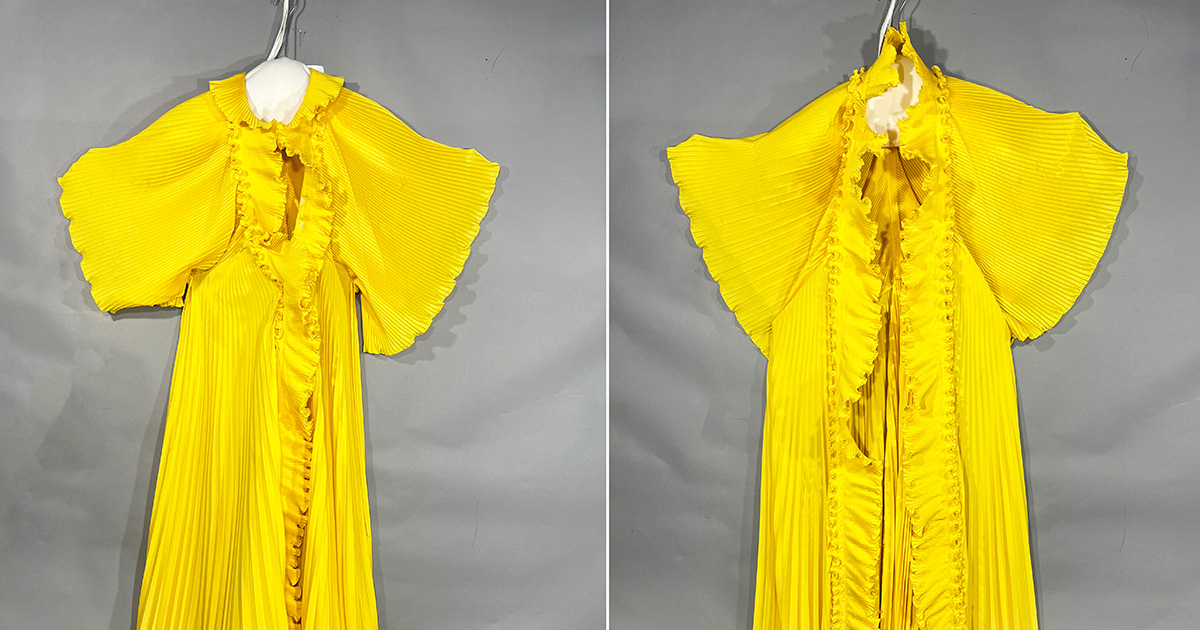- Events & Programs Home
- Calendar
- Accessibility
- Adults
-
Families & Teens
- Families & Teens Home
- 10x10 Teen Art Expo
- Art on the Rise
- Art Together: Art Making for Families with Children Ages 3–5
- Babies Sing with May Festival Minis
- Boy Scouts / Girl Scouts
- CAM Kids Day
- Family Storytime and Gallery Walk
- Family Studio: Art Making for Families with Children Ages 6–12
- Games in the Galleries
- Members-Only Baby Tours
- Public Baby Tours
- REC Reads
- Rosenthal Education Center (REC)
- Saturday Morning Art Class
- See Play Learn Kits
- Summer Camp
- Teen Fest: Zine and Comic Exchange
- Teachers
- Community Outreach
- Fundraisers
- Plan Your Own Event

- Events & Programs Home
- Calendar
- Accessibility
- Adults
-
Families & Teens
- Families & Teens Home
- 10x10 Teen Art Expo
- Art on the Rise
- Art Together: Art Making for Families with Children Ages 3–5
- Babies Sing with May Festival Minis
- Boy Scouts / Girl Scouts
- CAM Kids Day
- Family Storytime and Gallery Walk
- Family Studio: Art Making for Families with Children Ages 6–12
- Games in the Galleries
- Members-Only Baby Tours
- Public Baby Tours
- REC Reads
- Rosenthal Education Center (REC)
- Saturday Morning Art Class
- See Play Learn Kits
- Summer Camp
- Teen Fest: Zine and Comic Exchange
- Teachers
- Community Outreach
- Fundraisers
- Plan Your Own Event
Blog: CAM Uncovered
Blog: CAM Uncovered
- Home
- Plan Your Visit
- Art
-
Events & Programs
- Events & Programs Home
- Calendar
- Accessibility
- Adults
-
Families & Teens
- Families & Teens Home
- 10x10 Teen Art Expo
- Art on the Rise
- Art Together: Art Making for Families with Children Ages 3–5
- Babies Sing with May Festival Minis
- Boy Scouts / Girl Scouts
- CAM Kids Day
- Family Storytime and Gallery Walk
- Family Studio: Art Making for Families with Children Ages 6–12
- Games in the Galleries
- Members-Only Baby Tours
- Public Baby Tours
- REC Reads
- Rosenthal Education Center (REC)
- Saturday Morning Art Class
- See Play Learn Kits
- Summer Camp
- Teen Fest: Zine and Comic Exchange
- Teachers
- Community Outreach
- Fundraisers
- Plan Your Own Event
- Give & Join
- About
- Tickets
- Calendar
- Exhibitions
- Collections
- Blog
- Shop
Behind the Scenes in Conservation: “Toile” Tales
by C. Obie Linn, Conservator of Textiles
7/18/2024
CAMConservation , Rei Kawakubo , textile conservation
A story from the textile Conservation lab:
Megan Nauer, fashion and textile curatorial assistant, and I were doing condition checks of her selections for an upcoming display of contemporary Japanese designer fashion pieces. During our check, I noted that a 1999 jacket by Rei Kawakubo (Japanese, b. 1942) included some really wild seams (or lack thereof!) The sleeves flowed in a single cut of fabric from the body of the jacket. Wanting to do a little more analysis of this piece, I took the jacket back to the museum’s Conservation lab and created a toile, which is like a test version of a pattern used to study and perfect how an original flat pattern works. I finished my toile, and now check out these jacket/toile side-by-sides!
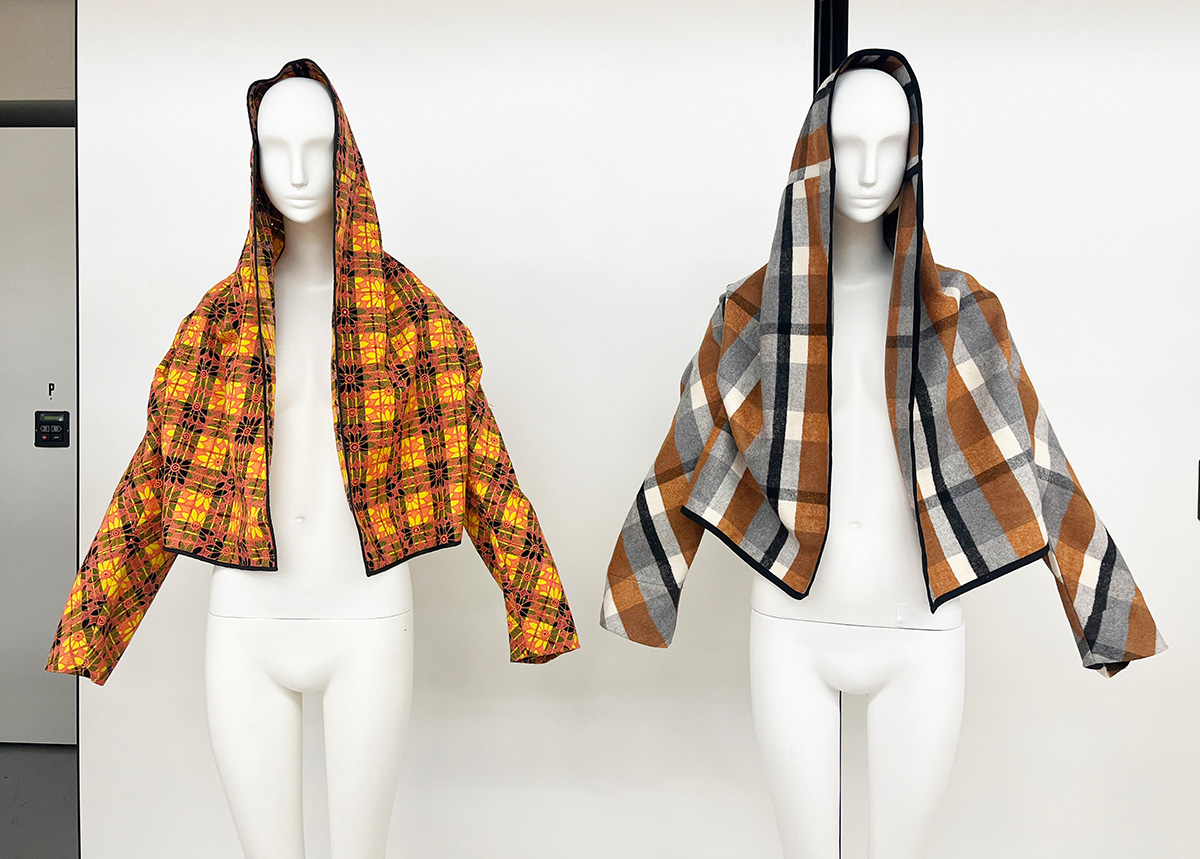
The original Rei Kawakubo jacket (left) and the toile made from a pattern taken from it (right), front views. With the hood up, the front of the jacket hangs straight vertically and the waistline evens out horizontally (although the toile didn’t cooperate very well here).
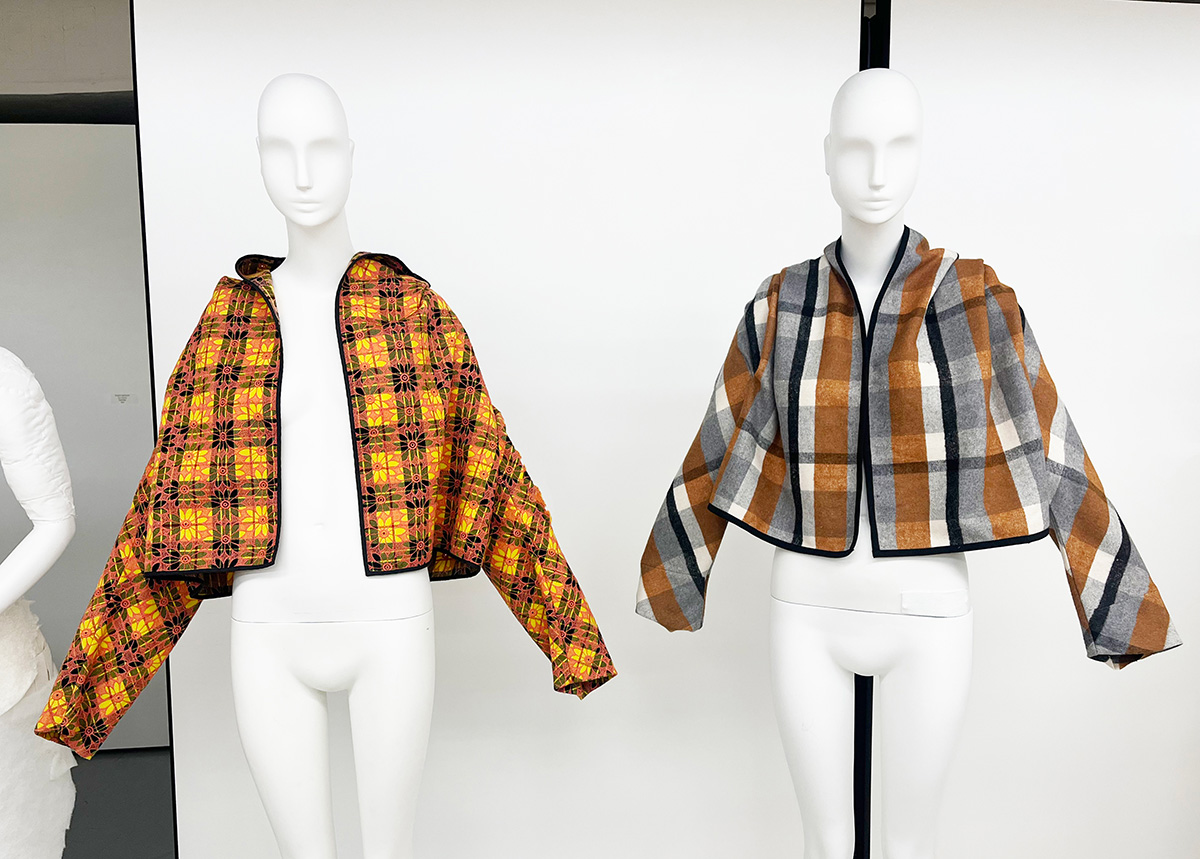
The original Rei Kawakubo jacket (left) and the toile made from a pattern taken from it (right), front views. With the hood up, the front of the jacket hangs straight vertically and the waistline evens out horizontally (although the toile didn’t cooperate very well here).
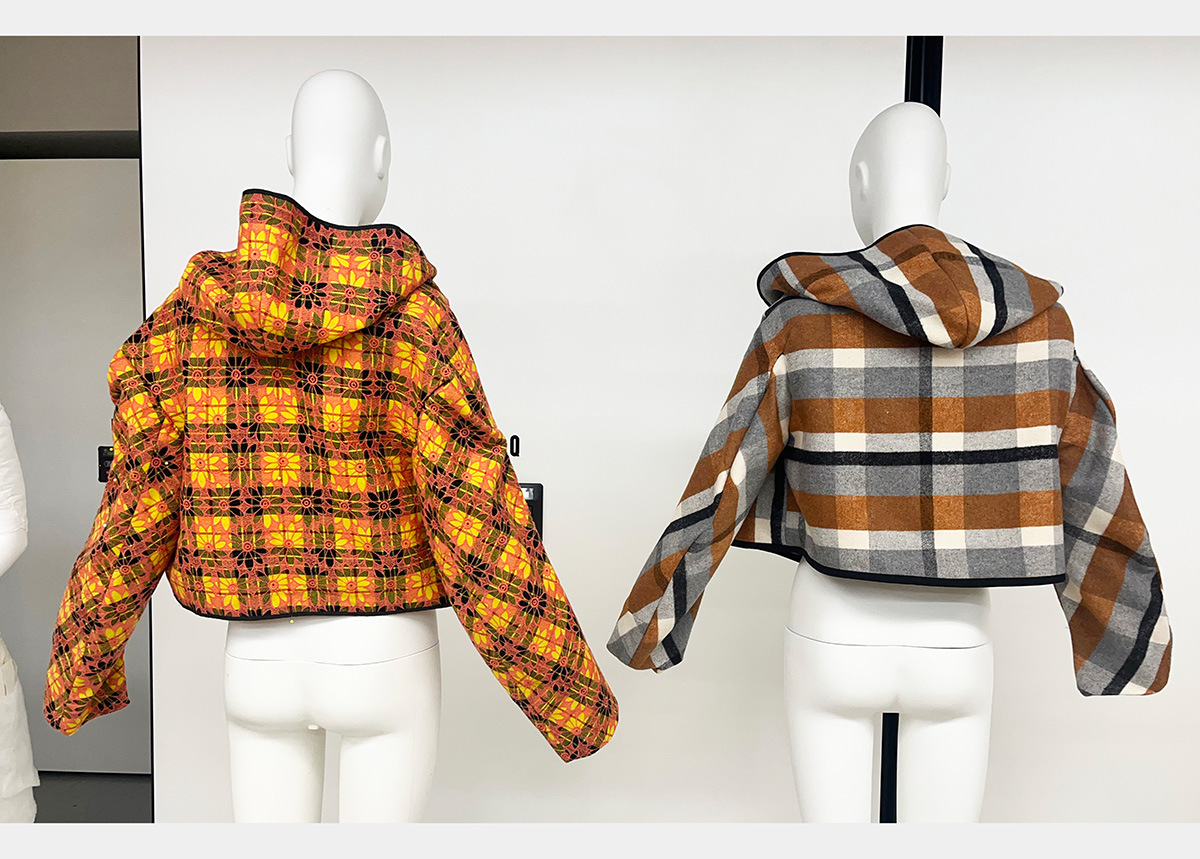
The original Rei Kawakubo jacket (left) and the toile made from a pattern taken from it (right), front views. With the hood up, the front of the jacket hangs straight vertically and the waistline evens out horizontally (although the toile didn’t cooperate very well here).
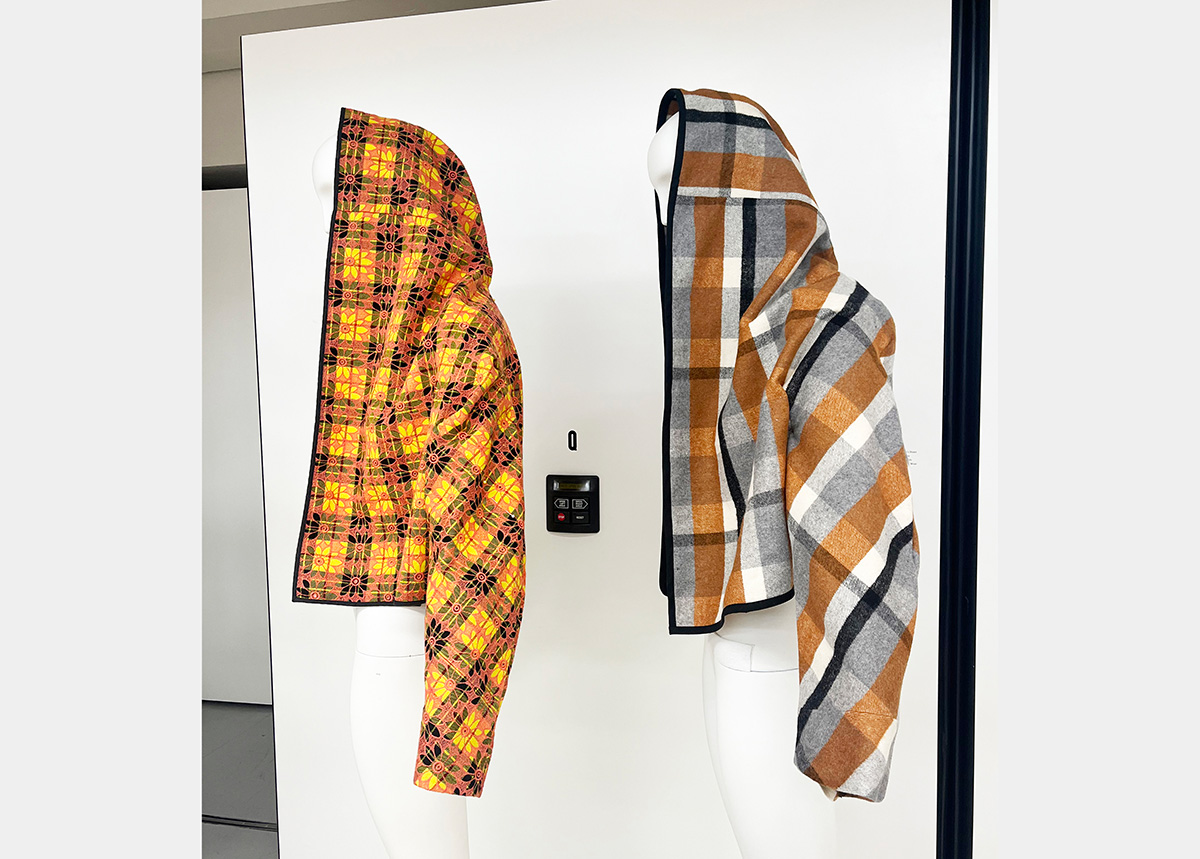
The original Rei Kawakubo jacket (left) and the toile made from a pattern taken from it (right), front views. With the hood up, the front of the jacket hangs straight vertically and the waistline evens out horizontally (although the toile didn’t cooperate very well here).

The original Rei Kawakubo jacket (left) and the toile made from a pattern taken from it (right), front views. With the hood up, the front of the jacket hangs straight vertically and the waistline evens out horizontally (although the toile didn’t cooperate very well here).
A flat pattern and toile can actually teach us a lot about the process used to design and create fashion art. My toile revealed several interesting things not apparent just by looking at the original jacket.
The main body of the jacket and the top half of the sleeves are cut in a single piece of fabric (on a fold), which is rather remarkable. Undersleeves and a hood (cut on a fold) complete the pattern. The separate cut of the undersleeves is necessary just to have enough fabric to get all the way around an arm, and the addition of the hood gives the ease needed for the neckline and shoulders to open up.
We also made a fun discovery while playing with the toile on a moving, living body. When you put the hood up, the whole jacket straightens out and hangs straight(!) a feature accentuated by the use of the plaid fabric with its perpendicular lines.
Studying a pattern like this can reveal little hints about how a piece was designed, changed, and created. The flat pattern here shows how Kawakubo changed the design from when the fabric was cut. The armhole seam is cut to fit in a more-or-less conventional fashion; however, the addition of the little pleat at the front of both seams appears to be a later addition (and one very hard to translate into a flat pattern!) It hints at the ways Kawakubo manipulated fabric to create innovative shapes and effects. Look for this and other pieces rotating on display in Gallery 136 in August!
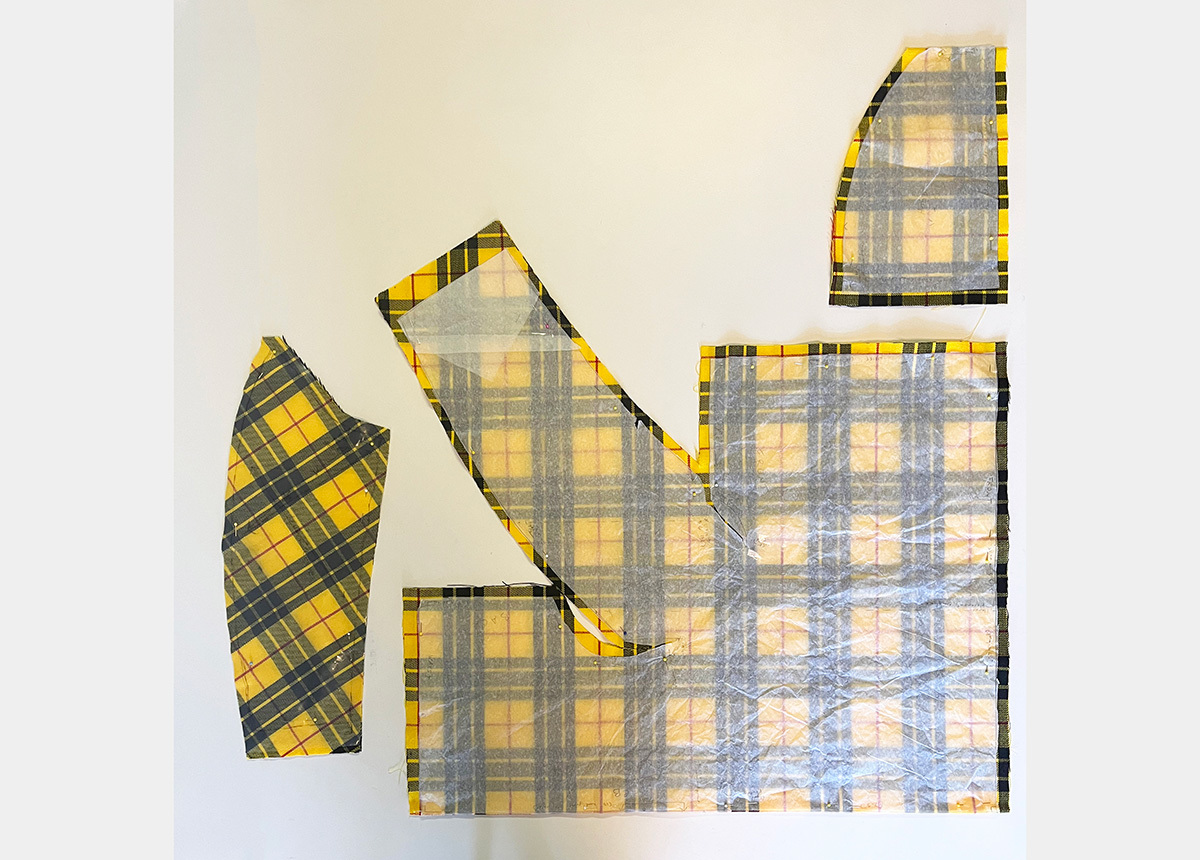
Rei Kawakubo (Japanese, b. 1942), Jacket, Fall 1999 “Transforming Glamour” collection, wool, cotton, Museum purchase: The Cynthea J. Bogel Collection, Lawrence Archer Wachs Trust, 2016.188a
Related Blog Posts

Cincinnati, OH 45202
Toll Free: 1 (877) 472-4226
Museum Hours
Museum Shop
Terrace Café
Library
Cincinnati Art Museum is supported by the tens of thousands of people who give generously to the annual ArtsWave Campaign, the region's primary source for arts funding.

Free general admission to the Cincinnati Art Museum is made possible by a gift from the Rosenthal Family Foundation. Exhibition pricing may vary. Parking at the Cincinnati Art Museum is free.
Generous support for our extended Thursday hours is provided by Art Bridges Foundation’s Access for All program.

General operating support provided by:



